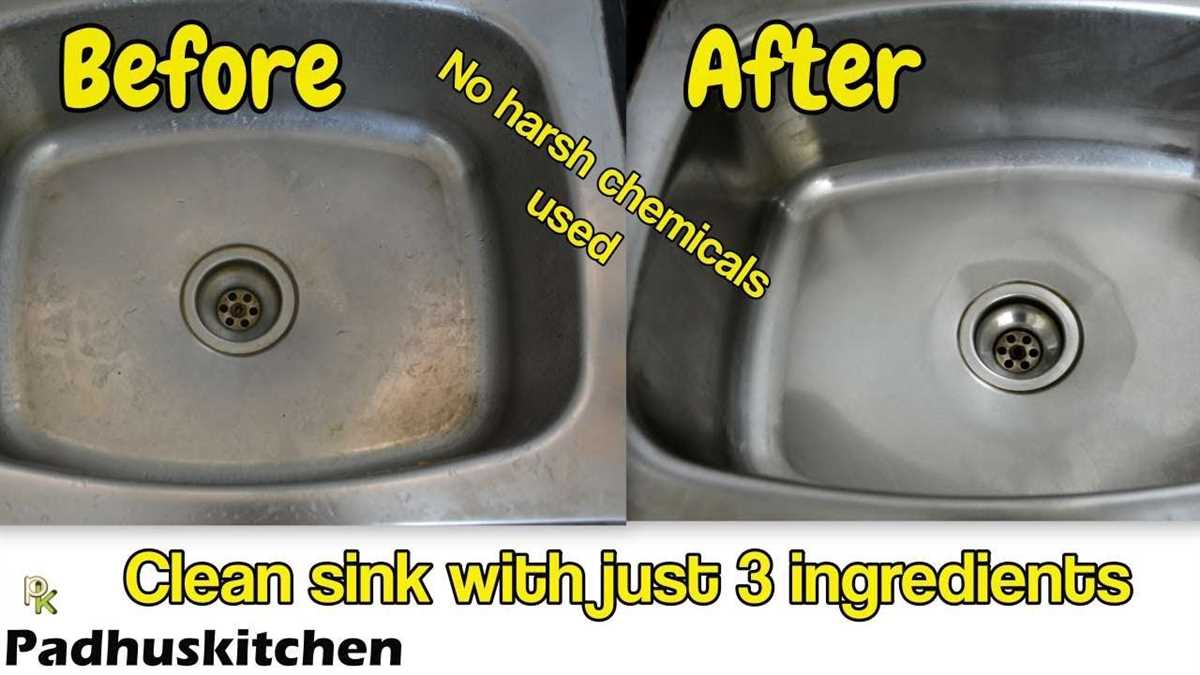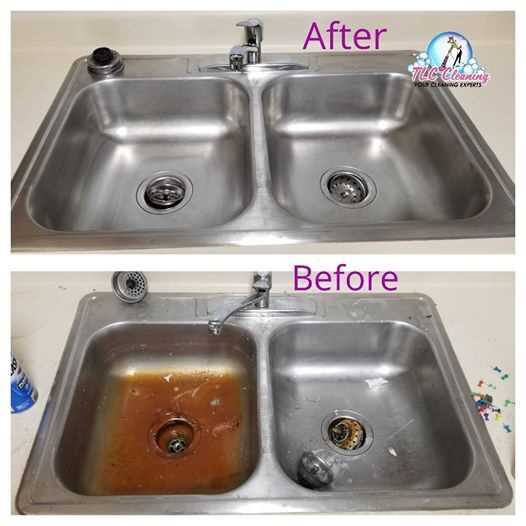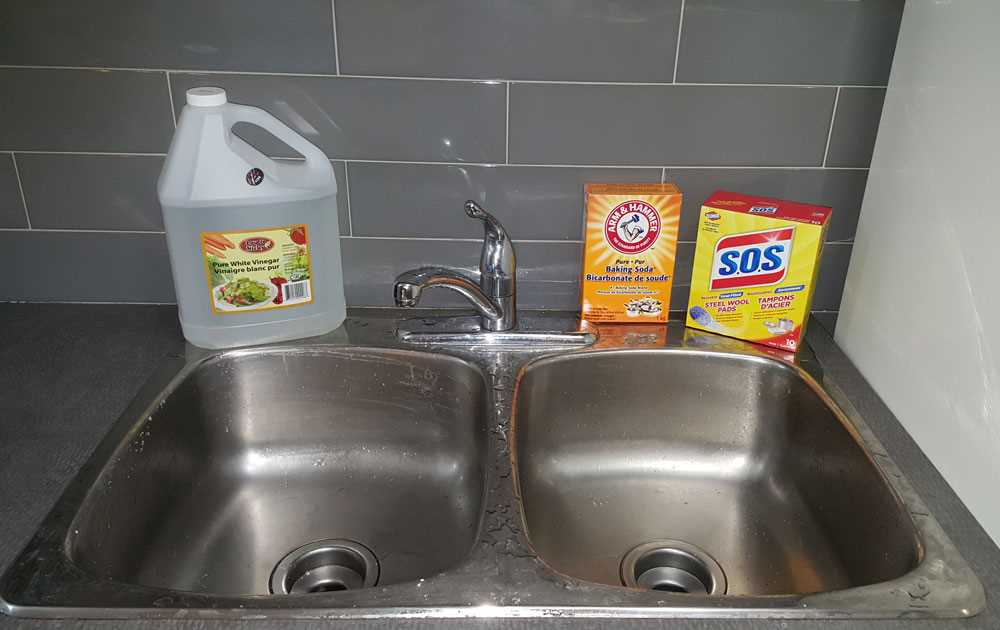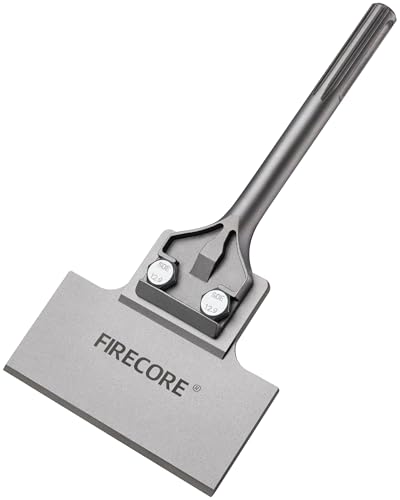
Stainless steel sinks are a popular choice for many kitchens due to their sleek and modern appearance. However, over time, these sinks can become dirty and dull, losing their shine. Cleaning a stainless steel sink may seem like a daunting task, but with the right techniques and materials, it can be a simple and satisfying process.
One of the first steps in cleaning a stainless steel sink is to remove any dishes or debris from the sink. This allows you to have full access to the sink and ensures that you won’t accidentally damage any items while cleaning. After clearing the sink, rinse it with warm water to remove any loose dirt or food particles.
Next, you’ll want to create a cleaning solution for your stainless steel sink. One popular option is to mix equal parts water and white vinegar in a spray bottle. This solution is effective at removing stains and disinfecting the sink. Alternatively, you can mix baking soda with water to form a paste that can be applied directly to tough stains. Both of these solutions are gentle and won’t harm the stainless steel surface.
Once you have your cleaning solution, the next step is to apply it to the sink. Spray the solution onto the surface of the sink or use a cloth or sponge to apply the paste directly to the stains. Allow the solution to sit for a few minutes to break up any grime or stains. Then, use a soft-bristle brush or sponge to scrub the sink, working in circular motions. Be sure to pay extra attention to any stubborn stains or areas of buildup.
After scrubbing the sink, rinse it thoroughly with warm water to remove any residue from the cleaning solution. Once the sink is clean, use a soft cloth or paper towel to dry the surface. This will help prevent water spots and keep your stainless steel sink looking shiny and clean.
In conclusion, cleaning a stainless steel sink doesn’t have to be a chore. With a few simple steps and the right cleaning solutions, you can restore your sink to its original shine. Remember to remove any dishes or debris from the sink, create a cleaning solution, apply the solution to the sink, scrub away any dirt or stains, rinse thoroughly, and dry the surface. By following these steps, you can keep your stainless steel sink looking clean and beautiful for years to come.
Why Cleaning Your Stainless Steel Sink is Important
A stainless steel sink is a popular choice for many kitchens because of its durability, modern look, and ability to resist stains. However, even though stainless steel is a rugged material, it still requires regular cleaning to maintain its appearance and functionality. Here are a few reasons why cleaning your stainless steel sink is important:
1. Prevents Stains and Discoloration
Stainless steel sinks can develop stains and discoloration over time if not properly cleaned. Food particles, grease, and other substances can build up on the surface and cause the sink to lose its shine. Regular cleaning helps to remove these stains and prevents the sink from looking dull or discolored.
2. Eliminates Bacteria and Germs
Kitchen sinks are a breeding ground for bacteria and germs. Dirty dishes, food scraps, and other debris can harbor harmful microorganisms that can make you sick. Cleaning your stainless steel sink on a regular basis helps to kill these bacteria and germs, keeping your kitchen and family safe.
3. Maintains the Sink’s Surface Integrity
Over time, dirt, grime, and abrasive substances can scratch the surface of your stainless steel sink. Regular cleaning helps to remove these particles and prevents them from causing damage. By keeping the surface clean, you can help maintain the integrity of your sink and prolong its lifespan.
4. Enhances the Aesthetics of Your Kitchen
A clean and shiny stainless steel sink can greatly enhance the overall aesthetics of your kitchen. It adds a touch of elegance and sophistication to the space, making it more inviting for you and your guests. Regular cleaning removes dirt and grime that can make your sink appear dull or unattractive.
5. Improves Functionality
A clean sink is a functional sink. Regular cleaning helps to remove clogs, prevent drain blockages, and ensure that water flows freely down the drain. It also prevents odors from building up and keeps your sink smelling fresh.
- Prevents Stains and Discoloration
- Eliminates Bacteria and Germs
- Maintains the Sink’s Surface Integrity
- Enhances the Aesthetics of Your Kitchen
- Improves Functionality
By regularly cleaning your stainless steel sink, you can keep it looking beautiful, functional, and safe for you and your family.
Choosing the Right Cleaning Products
When it comes to cleaning your stainless steel sink, it’s important to choose the right cleaning products. Using the wrong products can lead to damage and scratches on the surface of your sink. Here are some tips to help you choose the right cleaning products:
1. Avoid Abrasive Cleaners
Abrasive cleaners, such as scouring powders or steel wool, should be avoided when cleaning a stainless steel sink. These products can scratch the surface of the sink and leave behind permanent damage. Instead, opt for gentle cleaning solutions that are specifically designed for stainless steel.
2. Look for Non-Toxic Options
It’s important to choose cleaning products that are non-toxic, especially if you use your sink for food preparation. Look for products that are labelled as safe for use in kitchens and will not leave any harmful residues on your sink.
3. Consider Natural Cleaning Solutions
If you prefer to use natural cleaning solutions, there are several options that can be effective for cleaning a stainless steel sink. Vinegar is a great natural cleaner that can cut through grease and grime. Simply dilute vinegar with water and use a soft cloth or sponge to clean the sink.
4. Read Product Labels

Before using any cleaning product on your stainless steel sink, make sure to read the instructions and product labels. Some products may have specific usage recommendations or precautions that you need to be aware of. Following the instructions will help you achieve the best results without causing damage to your sink.
5. Test on a Small Area
If you’re unsure about a cleaning product, it’s always a good idea to test it on a small, inconspicuous area of your stainless steel sink. This will allow you to see how the product reacts with the surface and ensure that it doesn’t cause any damage or discoloration.
- Avoid using abrasive cleaners
- Look for non-toxic options
- Consider natural cleaning solutions like vinegar
- Read product labels and follow instructions
- Test on a small area before using
By choosing the right cleaning products, you can ensure that your stainless steel sink looks clean, shiny, and free from any damage.
Step-by-Step Guide to Cleaning Your Stainless Steel Sink
Cleaning a stainless steel sink can be a simple and effective process if you follow the right steps. Here is a step-by-step guide to help you clean your stainless steel sink and restore its shine:
1. Remove any food debris
- Start by removing any large food debris from the sink. Use a non-abrasive sponge or cloth to wipe away any visible crumbs or leftovers.
2. Rinse the sink
- Rinse the sink thoroughly with warm water to remove any remaining food particles or loose dirt.
3. Create a cleaning solution

- Mix a solution of warm water and mild dish soap in a clean bucket or basin. Make sure to use a mild dish soap that is safe for use on stainless steel surfaces.
4. Apply the cleaning solution
- Using a soft sponge or cloth, dip it into the cleaning solution and apply it to the entire surface of the sink. Make sure to scrub gently and in the direction of the grain.
5. Remove stains or marks
- If there are any stubborn stains or marks on the sink, you can use a stainless steel cleaner or a paste made from baking soda and water. Apply the cleaner or paste to the stain and gently scrub it with a soft sponge or cloth.
6. Rinse and dry

- Rinse the sink with clean water to remove any soap residue. Make sure to rinse thoroughly to avoid leaving behind any streaks or marks.
- Use a clean, dry cloth to wipe the sink dry. This will help prevent water spots or mineral deposits from forming on the surface of the sink.
7. Apply a stainless steel polish
- If you want to give your sink an extra shine, you can apply a stainless steel polish. Follow the instructions on the polish packaging for the best results. Apply the polish with a soft cloth and buff it in gently.
8. Maintain regular cleaning
- To keep your stainless steel sink looking its best, make sure to clean it regularly. Wipe away any spills or stains as soon as possible and avoid using abrasive cleaners or scrubbing brushes that can damage the surface.
By following these steps, you can keep your stainless steel sink clean, shiny, and in great condition for years to come.
Tips for Maintaining a Sparkling Stainless Steel Sink
Keeping your stainless steel sink looking sparkling clean can be a challenge, but with the right maintenance routine, it can be achieved. Here are some tips to help you maintain the beauty and shine of your stainless steel sink.
1. Clean Regularly
Regular cleaning is essential to prevent build-up and maintain the shine of your stainless steel sink. Use a mild detergent or dish soap and warm water to clean the surface. Avoid using abrasive cleaners or scrub brushes that can scratch the stainless steel.
2. Avoid Harsh Chemicals
To maintain the integrity of your stainless steel sink, avoid using harsh chemicals such as bleach, ammonia, or vinegar. These can damage the finish and leave your sink looking dull. Stick to gentle cleaning solutions specifically designed for stainless steel.
3. Dry After Use

Water spots and mineral deposits can form on the surface of your stainless steel sink if it’s not properly dried after use. Use a clean and soft cloth or towel to dry the sink thoroughly after each use. This will help prevent water stains and keep your sink looking shiny.
4. Avoid Leaving Food and Liquid Residue
Leaving food and liquid residue in your sink for extended periods can lead to staining and discoloration. Make sure to rinse away any food scraps or spills immediately and wipe the sink clean. This will help prevent any potential damage and keep your sink looking pristine.
5. Use a Protective Mat or Grid
Consider using a protective mat or grid in your sink to prevent scratches and dents. These accessories can also help to keep your sink looking clean by acting as a barrier between the sink and dishes or cookware. Make sure to choose a mat or grid that is designed specifically for stainless steel sinks.
6. Avoid Sharp Objects
Be mindful of sharp objects such as knives or utensils that can accidentally scratch the surface of your stainless steel sink. Instead of placing them directly in the sink, use a cutting board or a designated area on your countertop to avoid any potential damage.
7. Polish Occasionally
To restore the shine and luster of your stainless steel sink, consider using a stainless steel polish. Follow the manufacturer’s instructions and use a soft cloth to apply the polish in a circular motion. This will help remove any minor scratches and bring back the sparkle to your sink.
8. Maintenance Schedule

| Task | Frequency |
|---|---|
| Clean sink | Every day |
| Dry thoroughly | After each use |
| Polish | Once a month |
By following these tips and incorporating them into your regular cleaning routine, you can maintain a sparkling stainless steel sink that adds beauty to your kitchen for years to come.
Common Mistakes to Avoid When Cleaning Your Stainless Steel Sink
- Using abrasive cleaners: One of the most common mistakes you can make when cleaning your stainless steel sink is using abrasive cleaners. These can scratch the surface of your sink, leaving it looking dull and damaged. Avoid using harsh cleaners or scrubbing pads that can cause abrasions. Instead, opt for mild soap or gentle dishwashing liquid and a soft cloth or sponge.
- Using steel wool or wire brushes: Similarly, using steel wool or wire brushes can also damage your stainless steel sink. These can leave behind scratches and even rust stains. It’s best to steer clear of these abrasive tools and stick to non-abrasive cleaning materials.
- Leaving standing water: Another mistake to avoid is leaving standing water in your stainless steel sink. This can lead to the formation of water spots and mineral deposits, which can be difficult to remove. Be sure to dry your sink thoroughly after each use to prevent these issues.
- Using bleach or chloride-based cleaners: While it may be tempting to use bleach or chloride-based cleaners to disinfect your sink, it’s best to avoid them. These chemicals can cause pitting and corrosion on the surface of your stainless steel sink. Stick to more gentle and non-corrosive cleaning products.
- Scrubbing in the wrong direction: When cleaning your stainless steel sink, make sure to scrub in the direction of the grain. Scrubbing against the grain can cause scratches and ruin the finish of your sink. Take a moment to identify the direction of the grain and clean accordingly.
- Using acidic or abrasive food products: Avoid using acidic or abrasive food products directly on your stainless steel sink. Items like lemon juice, vinegar, and salt can cause damage to the surface. Instead, mix these ingredients with water and use a soft cloth or sponge to clean your sink.
- Neglecting to remove rust stains: If you find rust stains on your stainless steel sink, don’t ignore them. Leaving rust stains untreated can lead to permanent damage. Use a rust remover specifically designed for stainless steel and follow the product’s instructions to safely and effectively remove the stains.
Avoiding these common mistakes when cleaning your stainless steel sink will help you maintain its beautiful shine and keep it looking brand new for years to come. Remember to always follow the manufacturer’s instructions and use gentle cleaning materials to ensure the longevity of your sink.
FAQ
What is the best way to clean a stainless steel sink?
The best way to clean a stainless steel sink is by using mild dish soap, warm water, and a soft sponge or cloth. Rinse the sink thoroughly after cleaning and dry it with a soft towel to prevent water spots.
Can I use vinegar to clean my stainless steel sink?
Yes, vinegar can be used to clean a stainless steel sink. You can mix equal parts of vinegar and water in a spray bottle and use it to wipe the sink. However, make sure to rinse the sink thoroughly afterward to remove any residue.
What should I avoid using when cleaning a stainless steel sink?
When cleaning a stainless steel sink, you should avoid using abrasive cleaners, bleach, and steel wool. These can scratch the surface of the sink and damage its finish. Instead, stick to mild dish soap, vinegar, or specialized stainless steel cleaners.
How often should I clean my stainless steel sink?
It is recommended to clean a stainless steel sink at least once a week to prevent the buildup of stains, dirt, and bacteria. However, if you use your sink frequently or notice any stains, it may be necessary to clean it more often.
What can I do to remove stubborn stains from my stainless steel sink?
If you have stubborn stains on your stainless steel sink, you can try using a paste made from baking soda and water. Apply the paste to the stains, let it sit for a few minutes, and then scrub it gently with a soft sponge or cloth. Rinse the sink thoroughly afterward.












